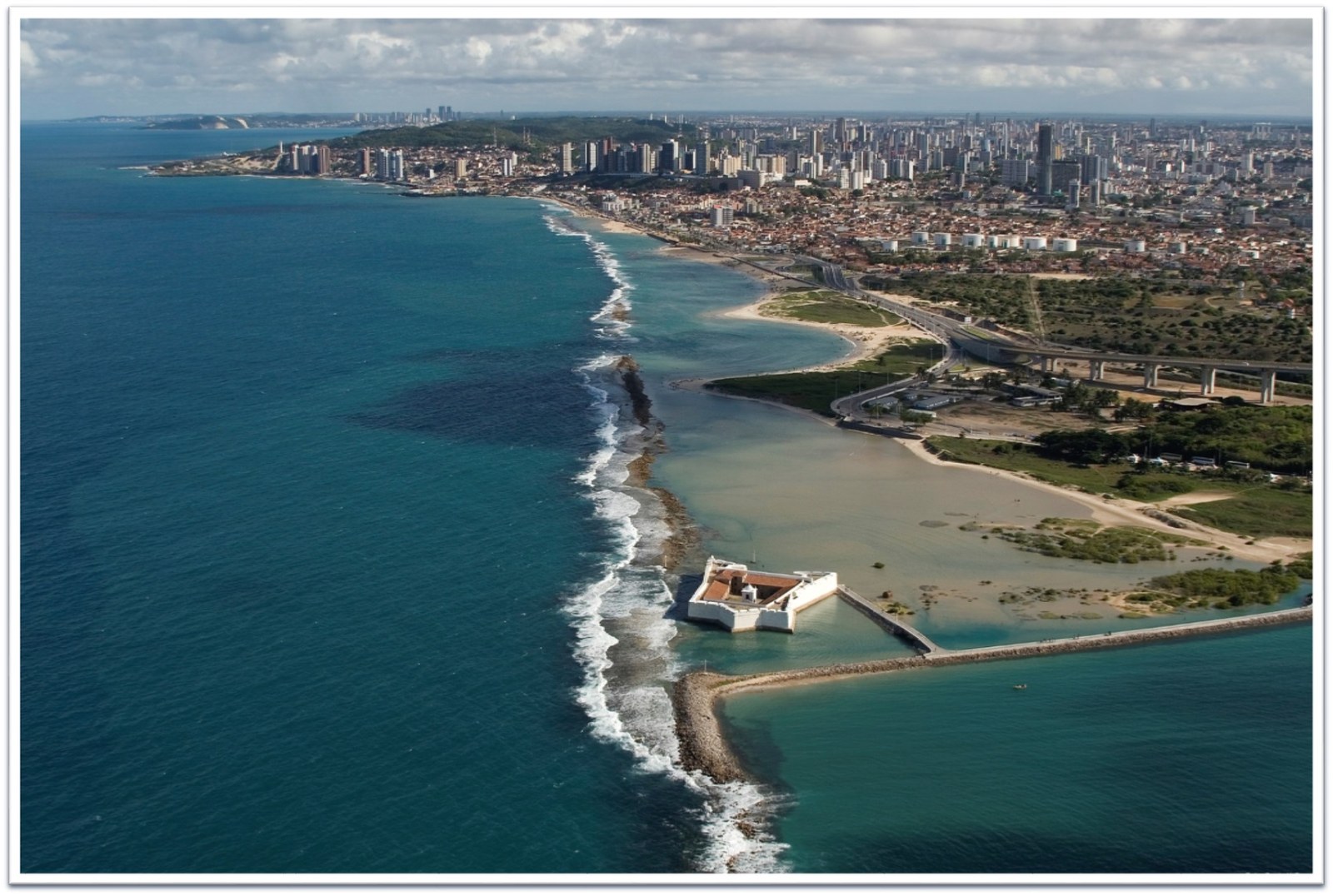Natal - RN
Basic Information
- Mayor: Álvaro Costa Dias
- Population: 751,300 people
- GDP per capita: BRL 26,972.28
- Human Development Index: 0.763
- Source: IBGE
Natal is the capital of Rio Grande do Norte, a state located in the country's Northern Region. With a territory of 167,401 km², it is also known as the City of the Sun (Cidade do Sol). Those born in the state of Rio Grande do Norte are known as potiguar, and those born in the city of Natal are natalenses. Founded in 1599, the city is sought after for its natural beauties and its historical and cultural heritage. Tourism is the city’s main economic activity, standing out among the Northeastern capitals with the highest percentage growth in tourist movement. Natal is one of the capitals hosting G20 activities.

Overview
It all started in the 16th century, on January 6, 1598, when a Portuguese fortress was built in the format of a star: then known as the Fortaleza dos Santos Reis (the Fortress of the Saint Kings), it now bears the name of Forte dos Reis Magos (the Fort of the Three Wise Men). Located 6.6 Kilometers from the edifice, on the margins of the Potengié River, the city of Natal was founded on December 25, 1599.
In 1633, Natal was invaded by the Dutch and provisionally named New Amsterdam, alluding to the Dutch capital. At that time, there were approximately 30 households in the recently founded town, most of them covered in straw.
In 1822, the year of the Brazilian Independence, Natal only had around 700 inhabitants; however, in the second half of the 19th century, cotton (referred to as “white gold”) boosted the local economy and promoted the city’s development, particularly in the Ribeira neighborhood, a region on the margins of the Potengi River, where there was a small port.
In 1912, a plan was devised for the development of the city. The avenues that currently pay tribute to Brazilian presidents such as Afonso Pena, Rodrigues Alves, and Campos Sales, were conceived during this period, a moment in time when the city had no more than two or three vehicles in circulation.
Brasil's entry into World War II in 1942, aligning with the United States, marked a new chapter in Natal's history. The establishment of a US military base in the capital of Rio Grande do Norte attracted investments and brought in 10,000 American soldiers, leading to a 20% increase in the city's total population.
Known as the "world capital of the buggy" — an off-road vehicle suited for sandy terrain — Natal boasts immense sand dunes, stunning lagoons, beautiful beaches, and the historic Forte dos Reis Magos (also known as the Fortaleza da Barra do Rio Grande). Southward, the Via Costeira highway spans 15 kilometers of coastline. The world's largest cashew tree, continuously expanding horizontally, grows at Pirangi Beach in Parnamirim, just 12 Kilometers from the capital city.
Other touristic points include the Ponta Negra Beach; the Morro do Careca; the Praia do Forte beach; the Natal Sand Dunes State Park (Parque Estadual das Dunas de Natal); the buggy ride in the Genipabu sand dunes; the Dom Nivaldo Monte Park (designed by Architect Oscar Niemeyer); the Potengi Palace (also known as the Potengi Cultural Space or the Cultural Palace); and the Natal Aquarium (the largest in the entire Northeastern region, attracting visitors from around the world), among others.
Airport
The Natal International Airport - Governador Aluízio Alves is located in the São Gonçalo do Amarante municipality, in the state of Rio Grande do Norte, 26 Kilometers from downtown Natal.
Sites
Government of the State of Rio Grande do Norte